Otto Dix
Born on the 2nd of December 1889, Otto Dix is one of the most infamous German expressionist painters. Otto began his artistic career as an apprentice for Dresden, a decorative artist. Years later, similar to many expressionistic artists, World War deeply effected and disturbed Otto personally and artistically. The Great War for him had resulted in a “cycle of 50 etchings, aquatints, and drypoint(…) “(Otto Dix, 2018)), all of which showcased the brutality, fear and trauma caused by the war. Through his technique of harsh, quick and aggressive lines and exaggerated expressions, seen in pieces such as The War (1923) and Wounded Man (1924), Otto enabled a reaction from the viewers and evoked a bone chilling sensation.
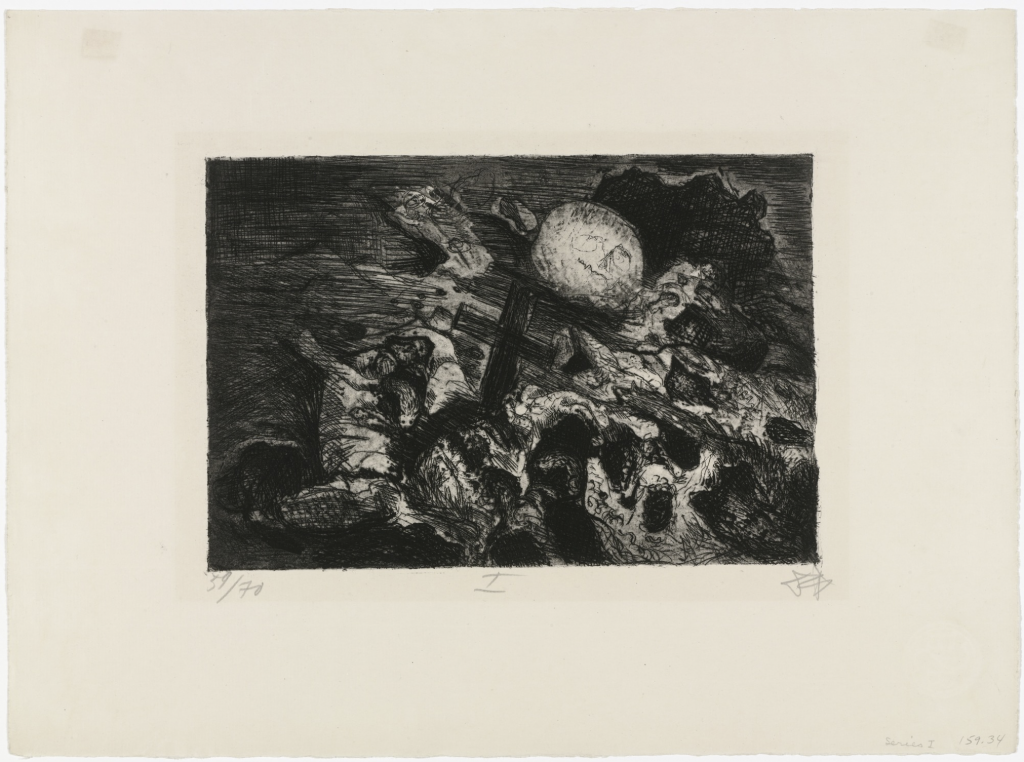
Figure 1. The War (1923) 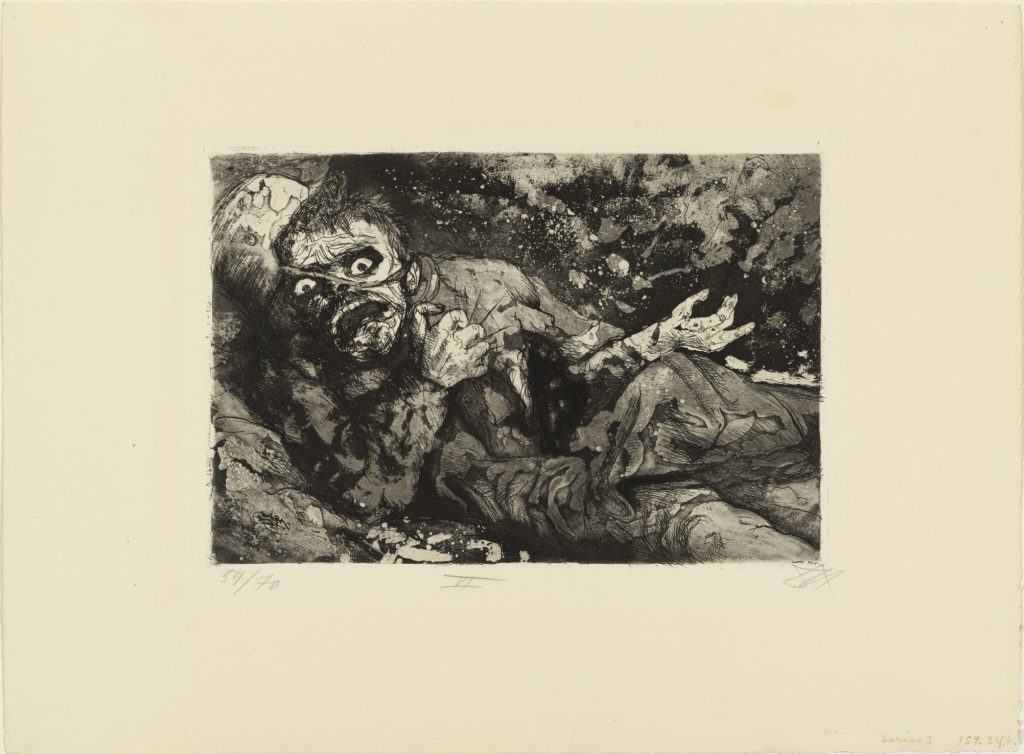
Figure 2. Wounded Man (1924)
A peice that exemplifies this as its simplest is Crater Field (1927). By covering his pieces mostly by pure black, with only few pure white spaces glimpsing through, Dix creates an environment that seems to be swallowed by darkness. His simple open blank lines, contrasting strongly with the overpowering black, translates into trenches of human flesh and bones. Although it might not be obvious to some what exactly is represented in the piece, the simple shapes and perfect use of black always translate into a nightmarish sentiments (see fig.3).
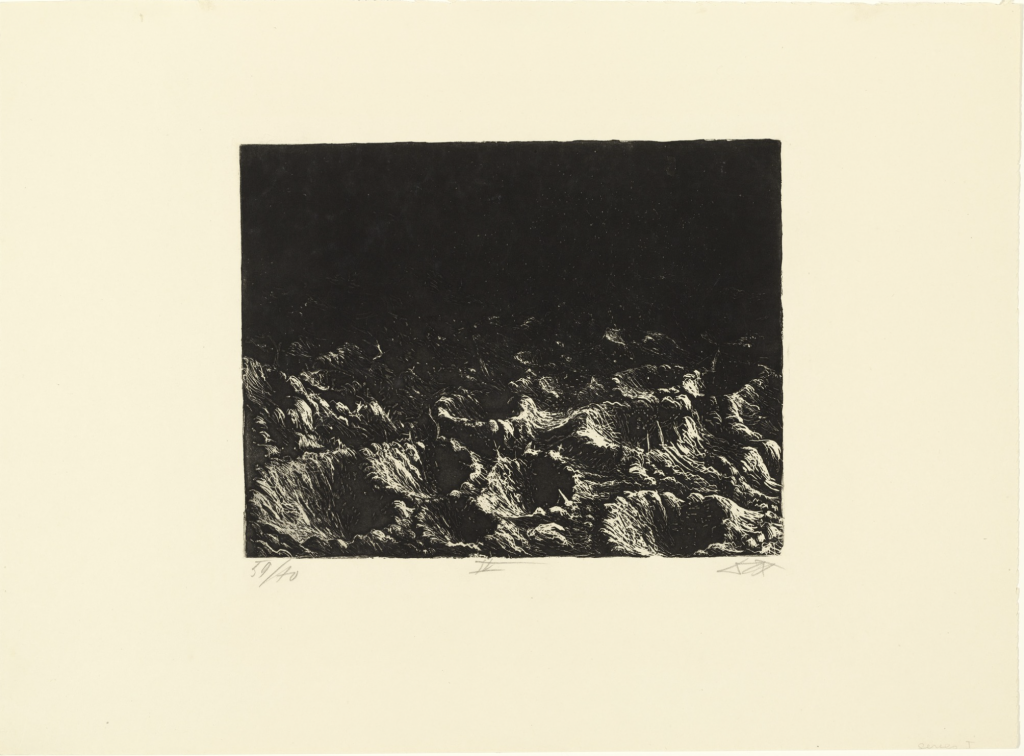
Through his many artworks about war, Otto had become part of the Neue Sachlichkeit movement. He had also been assigned professor of the Academy of Dresden. It was during his time there had be become obsessed with the style and technique of the Old Masters. Amongst his favourite were Durer, Hans Green and Lucas Cranach. He adopted the technique of the Renaissance artists by layering tempera on canvas. And instead of painting morbid scenes of WW1 and the aftermath, Otto painted caricatural portraits (see fig.4) .
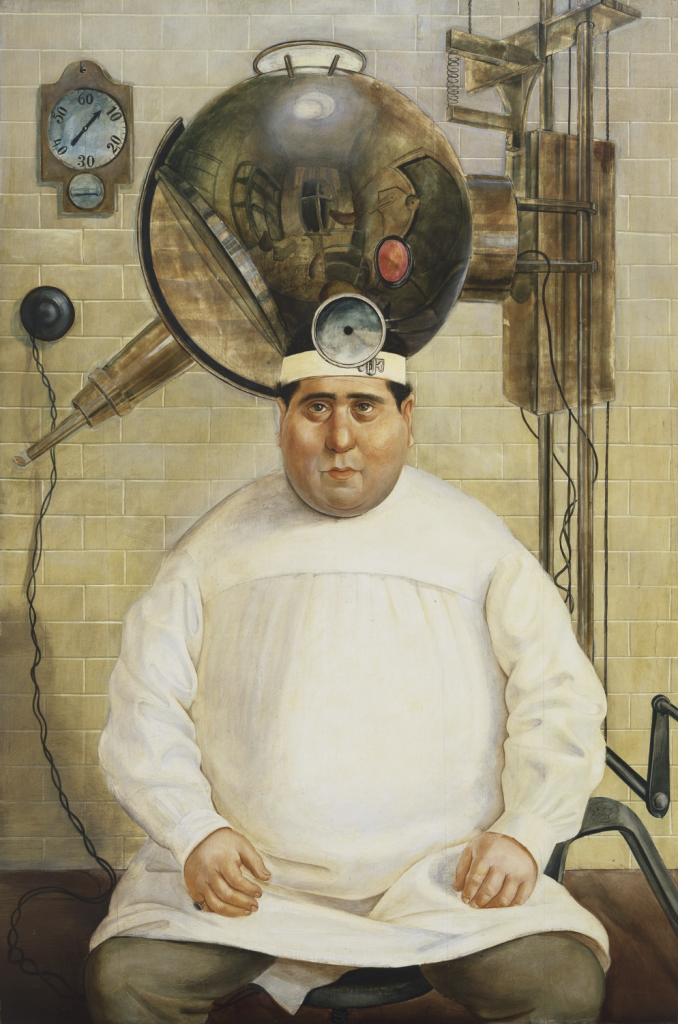
Shortly after his association to the Neue Sachlichkeit (New Objectivity) movement, Otto art was classified as disgraceful as it went against the rising political party. He was consequently banned from exhibiting, teaching and had 260 removed. By 1939, Otto was sentenced life imprisonment for conspiring a plot against Hitler. Luckily, he was drafted as a guard after serving 6 years of his sentence.
Despite the state of Germany during the Second World War, and his own personal treatment within the country, Otto Dix stayed but his style had drastically changed. He began painting simple landscapes and religious, christian specifically, themes all to stay within the traditional style. This change was also consciously done to stay safe from the strict Nazi Regimen and to be able to continue his practice. Otto Dix later died the 25th of July 1969.
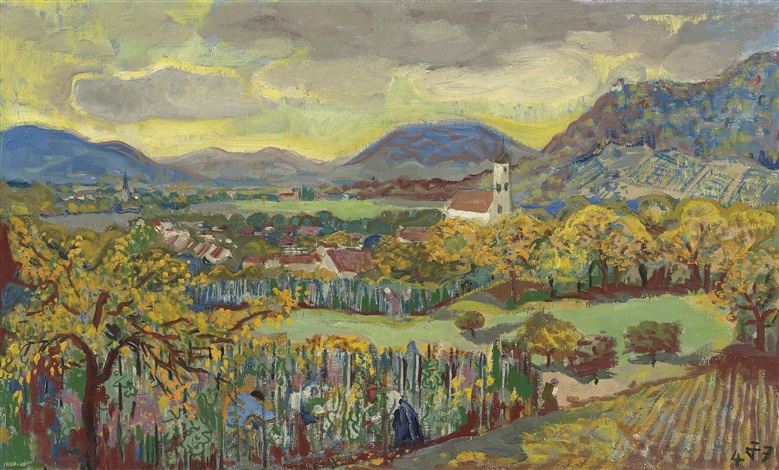
Work Cited:
Orley, Heidi. “Otto Dix.” Moma, 2018, www.moma.org/artists/1559?locale=en&page=&direction=.
The Editors of Encyclopaedia Britannica. “Otto Dix.” Encyclopædia Britannica, Encyclopædia Britannica, Inc., 21 July 2019, www.britannica.com/biography/Otto-Dix.
“Otto Dix.” Artnet, www.artnet.com/artists/otto-dix/?sort=10.
“Otto Dix.” National Gallery of Canada, www.gallery.ca/collection/artist/otto-dix.
Image:
Figure 1. Dix, Otto. The War. 1923. Etching. Moma, Queens.
Figure 2. Otto. Wounded Man. 1924. Etching. Moma, Queens.
Figure 3. Otto. Crater Field. 1927. Etching. Moma, Queens.
Figure 4. Otto. Dr. Mayer-Hermann. 1926. Etching. Moma, Queens.
Figure 5. Otto. Blick auf Öhningen und Stein am Rhein. 1947. Artnet. http://www.artnet.com/artists/otto-dix/blick-auf-öhningen-und-stein-am-rhein-klxnyf_5_RJH6UeN2SxqMA2. Etching. 28 October 2019.

For comments, please click on the title.